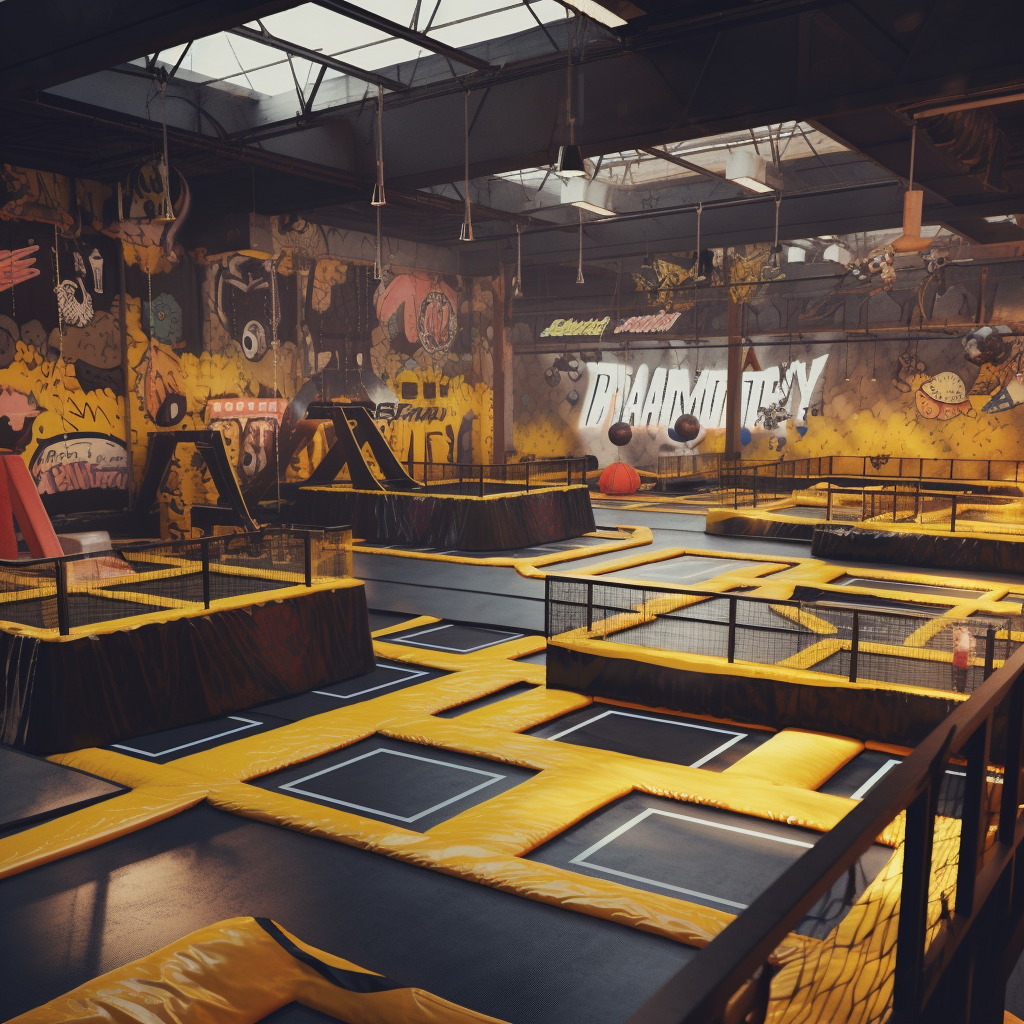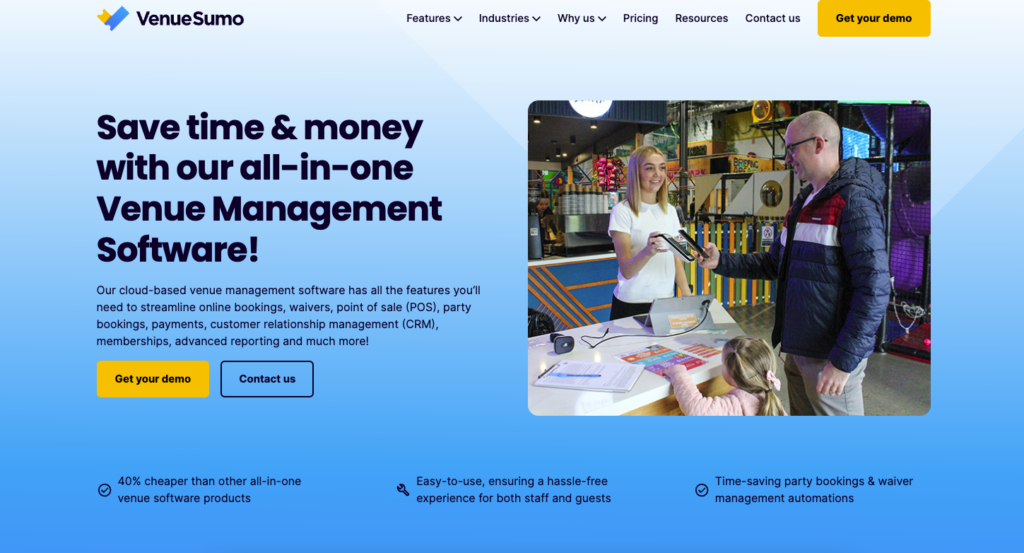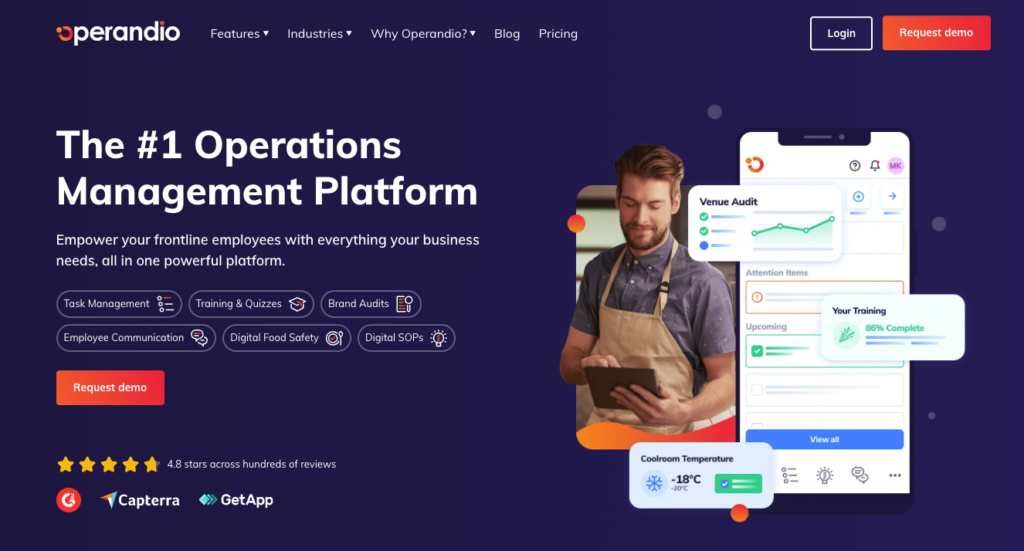
If you’re looking to dive into the exciting world of recreational entertainment venues, trampoline parks offer a fantastic business opportunity.
These entertainment hubs offer adrenaline-packed experiences for both young and old. In this guide, we lay down expert tips for starting your own trampoline park from conceptualization to your grand opening!
Trampoline parks are not just about fun; they’re a promising business venture. And whether you’re venturing anew or building upon your entrepreneurial experiences, this guide walks through some steps to help you prepare.
What are the steps to opening a trampoline park?
Step 1: Business Plan: Creating a Solid Foundation for Your Trampoline Park
A business plan is the bedrock of any successful trampoline park venture. It’s more than just a document; it’s a roadmap that guides your journey from conception to fruition. These are the key elements that constitute a comprehensive and compelling business plan for your trampoline park:
- Executive Summary: Condense your trampoline park vision into a summary that outlines your unique offerings and objectives.
- Company Description and Mission Statement: Define your park’s essence with a concise company description and a compelling mission statement that reflects your values.
- Market Analysis: Demonstrate industry knowledge by analysing the trampoline park sector, market trends, and your target audience.
- Competitive Analysis: Highlight your park’s distinctiveness by evaluating competitors’ strengths and weaknesses in relation to your offerings.
- Business Model and Revenue Streams: Illustrate your operational framework, pricing strategies, and diversified revenue sources.
- Marketing and Sales Strategies: Outline your strategies to engage customers through marketing campaigns, partnerships, and digital platforms.
- Operational Plan: Detail the day-to-day workings of your park, including staffing, safety protocols, and partnerships.
- Financial Projections: Present comprehensive financial projections, showcasing startup costs, ongoing expenses, and revenue forecasts.
- Funding and Investment: Explain your funding requirements and potential sources of capital, emphasising returns on investment.
- Exit Strategy: Prepare for the future with a strategic exit plan, outlining scenarios for growth, selling, or franchising your park.
Step 2: Location and Facility: Choosing the Right Space and Designing Your Park
Choosing the right location is pivotal. Here are the factors that you need to consider if you want to pick the perfect location for your trampoline park:
- Demographic Analysis: Start by conducting a detailed demographic analysis of potential areas, considering factors like age groups, income levels, and population density to match your target audience.
- Accessibility and Visibility: Choose a location with easy accessibility and high visibility, ideally near busy roads, major intersections, or popular commercial areas to attract passing traffic.
- Competition Analysis: Evaluate the proximity of existing entertainment centres, gyms, or trampoline parks to avoid oversaturation and identify gaps in the market.
- Foot Traffic and Surroundings: Opt for areas with significant foot traffic, such as shopping malls or family-friendly neighbourhoods. Examine nearby attractions that can complement your park, like restaurants or movie theatres.
- Safety and Zoning: Ensure the chosen area adheres to safety regulations and zoning laws for recreational establishments. Verify that the space meets all necessary safety standards for indoor amusement facilities.
- Growth Potential: Consider the area’s potential for growth and development over the next few years. Look into planned infrastructure projects, housing developments, and business expansions that could boost footfall.
- Adequate Space: Select a location with sufficient square footage to accommodate trampolines, attractions, waiting areas, and safety zones without feeling cramped.
- Parking Facilities: Provide ample parking spaces to accommodate peak hours and high customer volume, enhancing convenience and attracting visitors.
- Local Partnerships: Explore partnerships with local businesses, schools, or community centres that can mutually benefit from cross-promotion and collaborative events.
- Cost Analysis: Balance the potential benefits of a location with the associated costs, including rent, utilities, and taxes, to ensure financial feasibility.
- Customer Preferences: Consider customer preferences by gathering feedback or conducting surveys to gauge which areas they find most convenient and appealing.
- Future Outlook: Project how the chosen location aligns with your trampoline park’s long-term vision and expansion plans, ensuring compatibility with your business goals.
- Feasibility Study: Conduct a comprehensive feasibility study that analyses the overall suitability of the location based on market demand, local demographics, and economic trends.
- Local Regulations: Investigate local regulations related to permits, noise levels, and operating hours to ensure your park’s operations won’t face unnecessary restrictions.
Step 3: Planning and Design: Design your trampoline park
Creating an engaging and safe environment requires careful planning. Like the previous steps, there are a number of factors that you need to consider when designing your trampoline park. These factors include:
- Conceptualisation and Theme: Begin by envisioning the core theme and atmosphere of your trampoline park. Whether it’s an urban adventure or a cosmic escape, the theme sets the tone for the entire experience.
- Layout and Flow: Map out the park’s layout to ensure a seamless flow of visitors. Strategically position attractions, entrance and exit points, and rest areas to optimise customer movement.
- Trampoline Configuration: Leverage your expertise to arrange trampolines creatively, offering various zones for different activities like free jumping, dodgeball, and basketball.
- Safety First: Integrate safety measures into the design, placing padding, netting, and safety barriers around trampolines to mitigate potential risks.
- Interactive Attractions: Incorporate interactive elements like foam pits, climbing walls, and obstacle courses that enhance the park’s appeal and encourage diverse experiences.
- Toddler and Family Zones: Allocate spaces for younger visitors and families, ensuring they have a safe and enjoyable area suited to their needs.
- Aesthetic Appeal: Employ your eye for aesthetics to create visually captivating zones that immerse visitors in the park’s theme, using colours, lighting, and murals.
- Queue Management: Design waiting areas with comfort and entertainment in mind, reducing frustration during peak hours and enhancing the overall guest experience.
- Accessibility: Make provisions for visitors with disabilities, ensuring ramps, accessible trampolines, and facilities are seamlessly integrated.
- Sound and Acoustics: Consider sound-absorbing materials and acoustic design to prevent noise from becoming overwhelming and create an enjoyable ambiance.
- Technology Integration: Infuse technology into your design with features like digital check-ins, virtual reality attractions, and social media sharing points.
- Maintenance Ease: Incorporate materials and layouts that are easy to clean and maintain, minimising downtime for repairs.
- Flexibility for Upgrades: Design with the future in mind, leaving room for expansion and the addition of new attractions as your park evolves.
Step 4: Select Software and Hardware Needed to Drive Operations
Starting a trampoline park requires you to use specialized trampoline park software and equipment to handle different tasks:
Software Tasks
- Accounting: Efficient accounting software is essential for a trampoline park to manage finances seamlessly. It tracks incoming revenue from ticket sales and concessions while monitoring outgoing expenses such as equipment maintenance and staff wages.
Detailed financial reports provide insights into profitability, helping you make informed business decisions. This software streamlines invoicing, tracks accounts payable and receivable, and ensures accurate tax reporting, contributing to the financial health and growth of your park.
Examples of this software include: Xero and QuickBooks Online
- HR Software: HR software plays a pivotal role in managing the workforce at your trampoline park. It enables you to maintain employee records, track attendance, and manage shifts efficiently. The software aids in payroll processing, ensuring accurate compensation for staff.
It assists in talent acquisition by storing resumes, facilitating interviews, and tracking hiring processes. This tool enhances communication between management and staff, promoting a well-organised and motivated team.
Examples of this software include: Rippling and BambooHR
- Venue Management Software: Venue management software is a powerful tool designed to serve as a centralised platform that allows venue operators to efficiently manage every aspect of their space, from booking and scheduling to ticketing, billing, and customer engagement.
This software automates numerous tasks, such as event planning and coordination, resource allocation, and staff management, resulting in significant time and cost savings. Moreover, it enables venues to maintain detailed records, track occupancy, and optimise resource utilisation.
Examples of this software include: VenueSumo

- Operations Checklist and Workflow Management: Operations Checklist and Workflow Management software helps organisations create and manage checklists and workflows for various tasks and processes. It simplifies complex operations by breaking them down into step-by-step instructions that can be easily followed by employees.
This not only reduces the likelihood of errors but also ensures that tasks are completed in a consistent and organised manner. With the ability to assign tasks, set deadlines, and track progress, this software enhances productivity, communication, and accountability within teams.
Examples of this software include: Operandio

- Marketing Tools: Marketing tools are indispensable for promoting your trampoline park and engaging with your audience. Social media management software allows you to schedule, post, and analyse content across various platforms, maintaining an active online presence.
Email marketing tools facilitate targeted communication with customers, promoting special offers, events, and updates. Analytics platforms provide insights into marketing campaigns, enabling you to refine strategies and better understand customer preferences, ultimately driving visitor engagement and business growth.
Examples of this software include: Monday and Salesforce
Hardware Tasks
- EFTPOS: Efficient and secure electronic funds transfer at point of sale (EFTPOS) systems are essential for seamless transactions in a trampoline park. These systems enable customers to make cashless payments for tickets, snacks, and merchandise.
EFTPOS terminals are strategically placed at various points within the park, allowing visitors to conveniently complete transactions using their debit or credit cards. This technology streamlines the payment process, reducing wait times and enhancing the overall customer experience.
Examples of this hardware include: VenueSmart, Tyro and Smartpay
- Portability (Mobile, Laptops and Tablets): In a dynamic environment like a trampoline park, portability is key. Mobile devices, laptops, and tablets empower park staff to access essential information and manage operations on the go.
Whether it’s checking attendance records, managing reservations, or providing customer support, these devices offer flexibility and convenience. They ensure that staff can efficiently assist visitors and address any issues without being tied to a specific location.
Examples of this hardware include: Apple or Samsung
- Barcode Scanning: Barcode scanning technology plays a pivotal role in managing admission and inventory within a trampoline park. Each customer’s admission ticket or pass is equipped with a unique barcode.
Scanning these barcodes at entrance points ensures accurate and swift entry, enhancing visitor flow and reducing congestion. Additionally, barcode scanning assists in tracking merchandise sales and managing inventory levels, streamlining the overall operational process.
Examples of this hardware include: ScanSKU and Barcodes
- Ticketing Kiosks: Ticketing kiosks serve as self-service stations that offer customers the convenience of purchasing admission tickets on-site. These kiosks are equipped with user-friendly interfaces that guide visitors through the ticket selection and payment process.
By allowing customers to buy tickets independently, trampoline parks enhance efficiency and minimise waiting times, contributing to an improved overall guest experience. Kiosks are strategically placed to accommodate high foot traffic areas, ensuring accessibility for all visitors.
Examples of this hardware include: Kiosk and Meridian
By using these tools, you can make sure everything runs smoothly and attract customers to your trampoline park.
Step 5: Equipment and Safety Measures: Ensuring a Fun and Safe Experience for Customers
When launching a trampoline park, one of the most important tasks is getting the highest-quality equipment; ensuring safety, longevity, and a top-tier customer experience.
Begin by conducting rigorous market research to identify leading suppliers in the trampoline and indoor amusement industry. Establishing strong relationships with these suppliers is key; initiate discussions to understand their product offerings, warranty terms, and post-purchase support. Always prioritise safety; vet equipment for compliance with industry standards and ensure they meet rigorous safety benchmarks. Ask for references, and if possible, visit other parks that utilise the same equipment to gauge its performance and durability.
Lastly, keep an open line of communication with your suppliers, as a collaborative approach can lead to tailored solutions, timely deliveries, and potential discounts for bulk or repeat purchases.
Step 6: Human Resources: Hire and train staff
Creating a successful trampoline park hinges on assembling a passionate, knowledgeable team. Define roles, hire enthusiastic staff with customer service experience, and prioritise safety-conscious individuals.
After recruitment, provide comprehensive training in safety protocols, emergency response, and guest interactions. Continuous learning ensures a confident and skilled team that upholds your park’s excellence and creates memorable experiences.
Step 7: Marketing and Promotion: Attracting Customers to Your Trampoline Park
As the grand opening of your trampoline park approaches, crafting a robust marketing strategy becomes pivotal. Leverage your expertise to design engaging pre-launch campaigns that harness social media, influencer partnerships, and local community engagement.
Tease potential visitors with glimpses of the park’s attractions and emphasise the unique experiences it offers. Utilise captivating visuals, videos, and interactive content to generate excitement. Collaborate with local schools, community centres, and businesses to establish partnerships that mutually benefit. Consider hosting exclusive preview events to give a select audience a sneak peek, building anticipation and word-of-mouth buzz.
Remember, a well-executed marketing campaign not only fills your park with eager guests on opening day but also establishes a strong foundation for sustained customer engagement and repeat visits.
Once the day of opening has come, you will see the results of your hard work and planning, as your patrons have the first of many enjoyable experiences. Congratulations, you’ve just started a trampoline park.
How can VenueSumo help me start my trampoline park?
VenueSumo’s cutting-edge software features are the backbone of your trampoline park’s success, simplifying and optimising critical aspects of your operations.
Online Booking & Ticketing
Streamline the customer experience with user-friendly online booking and ticketing. Empower visitors to effortlessly reserve their jumping slots, ensuring a seamless entry process and eliminating long queues.
Party, Group & Event Bookings
Elevate your trampoline park’s appeal by offering hassle-free party and event bookings. Enable guests to reserve party packages and group outings online, while also ensuring efficient space allocation and personalised experiences.
POS (Point of Sale)
Effortlessly manage transactions with VenueSumo’s intuitive POS system. Facilitate smooth payments for admissions, merchandise, and concessions, enhancing customer convenience and satisfaction.
CRM (Customer Relationship Management)
Nurture lasting relationships with your customers through VenueSumo’s robust CRM. Keep track of customer interactions, preferences, and feedback, enabling personalised experiences that foster loyalty.
Memberships
Maximise customer engagement and revenue streams with a dynamic membership system. Offer exclusive perks, loyalty rewards, and special offers that keep visitors coming back for more.
Waiver Management
Ensure legal compliance and safety with efficient waiver management. Simplify the process of collecting and storing waivers, providing a secure and organised way to handle this crucial aspect.
Payments
VenueSumo’s secure payment processing system ensures seamless transactions, offering various payment methods to accommodate your customers’ preferences.
Guest Feedback
Harness valuable insights by capturing guest feedback. Address concerns, highlight successes, and refine your trampoline park experience based on real-time input.
Reporting & Analytics
Make informed decisions with VenueSumo’s detailed reporting and analytics tools. Gain insights into attendance trends, revenue streams, and operational performance to drive strategic improvements.
Incident Reporting
Prioritise safety with an incident reporting system that allows staff to swiftly document and address any incidents, fostering a secure and enjoyable environment for all visitors.
Security & Access
Implement strict access controls with VenueSumo’s security features. Manage employee access, monitor guest flow, and ensure the overall security of your park.
Gift Vouchers
Boost revenue and provide a thoughtful gift option with customisable gift vouchers that visitors can purchase and redeem for unforgettable experiences.
Multi Venue
Scale your operations seamlessly with multi-venue support. If expansion is on the horizon, VenueSumo ensures your software grows with you.
API & Integrations
Integrate VenueSumo with other essential tools and systems to create a cohesive operational ecosystem that enhances efficiency and productivity.
Website CMS (Content Management System)
Maintain an attractive and informative online presence with VenueSumo’s website CMS. Keep customers engaged with up-to-date information about your park, events, and offerings.
Agent Commissions
Facilitate partnerships with agents and affiliates through commission management, allowing you to expand your marketing reach and drive sales.
With VenueSumo’s comprehensive software suite, you’re equipped to navigate the complexities of launching and managing your trampoline park with confidence, efficiency, and a customer-centric approach.
Get a demo for VenueSumo or contact us for more information today!


